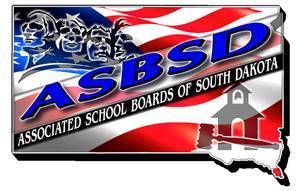A report detailing teacher pay in South Dakota was recently approved by the board charged with reviewing its progress.
Members of the Teacher Compensation Review Board (TCRB) approved its final report in September and sent it on to Gov. Kristi Noem and the legislature for review. Read the final report here.
Conclusions in the report include:
- The Blue Ribbon Task Force set out a robust agenda to enact positive change for teacher pay in South Dakota after the state had the lowest average teacher salary in the country for decades. Since then, the actions taken on the task force’s recommendations, including changes to the funding formula and increased funding to K-12 education, show that South Dakota made significant strides in teacher pay. The only state with a larger increase in average teacher pay is Washington state. South Dakota’s wage growth of 22.39%, ranked second best in the country, is far ahead of the national average growth over that time at 13.29%;
- Though South Dakota has made significant investments, the state is now ranked 50th in teacher salaries after other states also made notable investments in teacher pay in recent years;
- Recruiting and retaining educators must remain a priority at both the local and state levels to ensure that, in addition to competitive salaries, the workforce is filled with qualified educators who support students in their academic and personal development;
- The teacher shortage in South Dakota is challenging for many districts and is projected to increase. The highest needs in South Dakota are in elementary, special education, language arts, fine arts, math, and miscellaneous/non-credit positions. Teacher pay is one of several important factors to address this shortage. The state’s quality communities, excellent retirement benefits, low cost of living, and additional benefits paired with salaries all contribute to a good quality of life for those in the education profession;
- Decision makers at all levels must utilize possible options to make teacher salaries competitive in the state and around the region. Every effort should be made to keep great teachers in classrooms in South Dakota, including addressing the costs of higher education for teacher candidates:
- Local school boards set teacher salaries and make staffing decisions that align with their district priorities and needs. School districts must structure wage ranges, from starting pay to the highest wages, to attract and retain a qualified and capable workforce;
- Policy makers must recognize there are many pressure points on local school district budgets. With property tax valuations increasing in many areas of the state, decisions makers should consider the reallocation of existing budgets to help attract and retain great teachers;
- Workforce shortages in non-certified staffing is causing a shift of resources away from teacher salaries. As schools have had to increase hourly wages to attract and retain support staff, budgets are shifting toward those priorities. Increased support staff costs will erode the ability for school boards to increase teacher salaries;
- The impacts of the COVID-19 pandemic are not yet fully understood, particularly in relation to the availability of the education workforce, economic inflation, and teacher compensation. In particular, substantial inflation over the past six months indicates that the index factor in the state aid formula is likely to be below the inflationary adjustment needed to prevent salaries from falling further behind in market competitiveness. Policy makers must watch economic and labor force indicators carefully in the coming months and years to position South Dakota’s schools and educators in a sustainable and competitive position.
“We need to make sure people understand, we are in a situation here,” Sen. David Wheeler said of current teacher pay, adding “although we have done very well” in improving teacher salaries in the last five years since the funding package passed in 2016 following the Blue Ribbon Task Force study, the influx of funding and changes to education funding laws “only got us up one ranking from 51st to 50th.”
TCRB’s report comes after three meetings with the board reviewing reports and data on the state’s teacher pay, comparisons regionally and nationally, the status of the teacher workforce and more.
The final report notes the issues facing the state and schools as it relates to teacher pay and workforce, but the action that comes next will determine what the landscape looks for schools.
“Do we settle…or do we say 50th isn’t acceptable?” ASBSD Executive Director Wade Pogany said at previous meeting. “I’m trying to suggest we need to keep up.”
“I think that’s a question for policy makers, that we need to ask.”
For updates on education funding and issues facing public education, check the ASBSD Blog.
